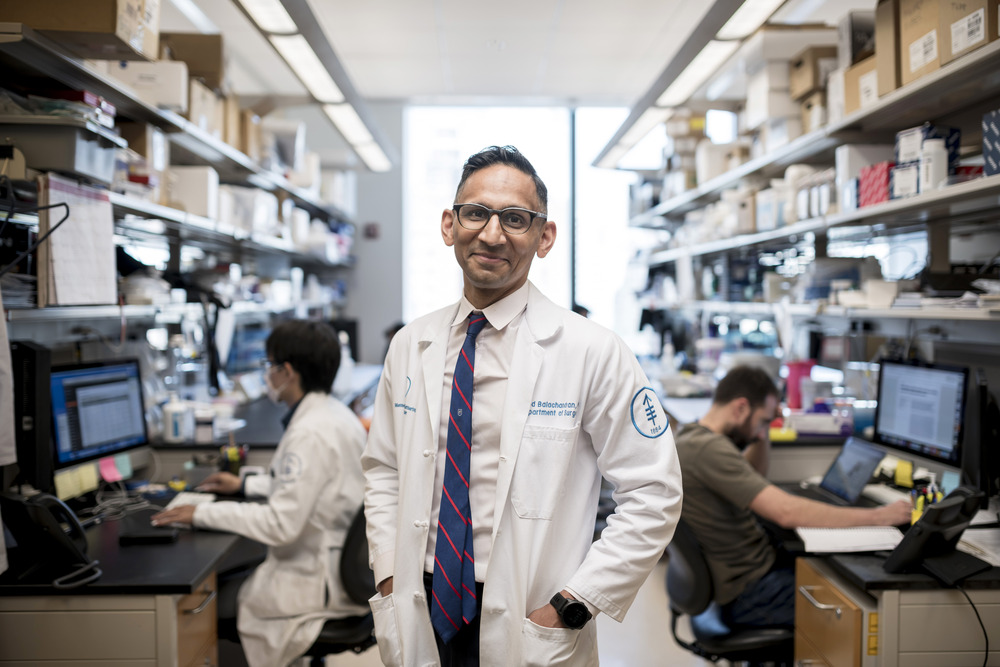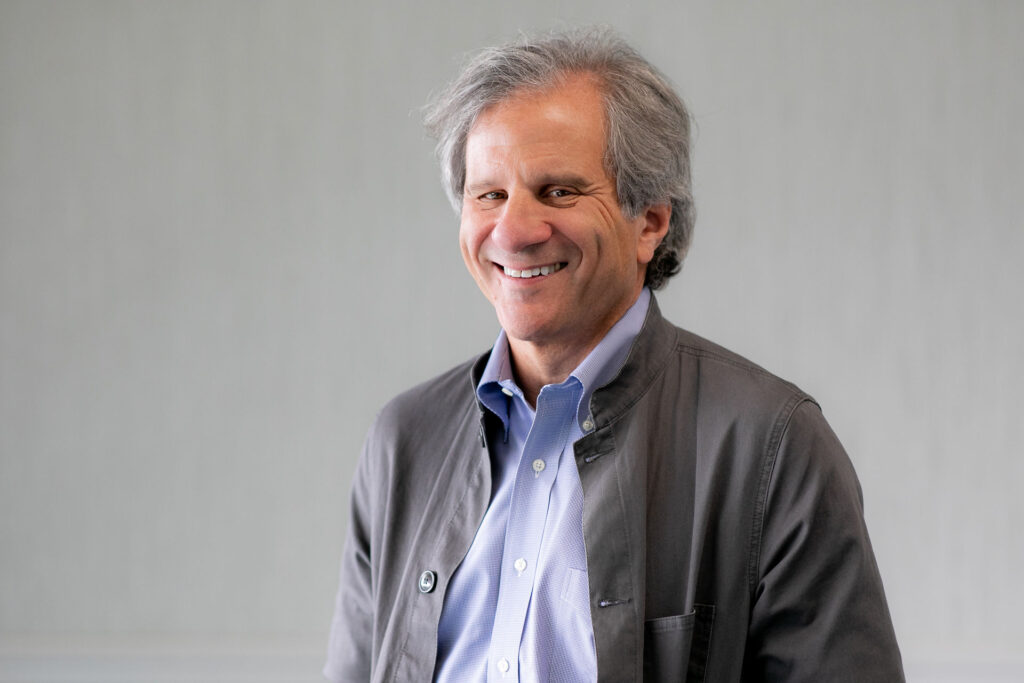For many years, Vinod P. Balachandran, MD, surgeon-scientist at Memorial Sloan Kettering Cancer Center (MSKCC), has been studying a rare cohort of pancreatic ductal adenocarcinoma (PDAC) to try to understand two questions. First, as nearly 90% of PDAC patients who receive standard treatments die within 18 months, how is it that a rare PDAC patient cohort survives? And second, is there a way to replicate this with particular therapies?
“We discovered that these patients generate spontaneous immune responses to their [pancreatic] cancer, so their immune systems are able to recognize their cancers in a very unique way compared to other patients,” Balachandran told GEN about previous work that was published in 2017. “This led us to figure out that the neoantigens seen by the T cells are generated from mutations in the cancer, and these neoantigens, we thought, were what were potentially contributing to these long-term survivors living so long,” Balachandran said.

The research article, “Personalized RNA Neoantigen Vaccines Stimulate T Cells in Pancreatic Cancer,” was published in Nature.
Swimming upstream
A few years ago, in Mainz, Germany, a meeting took place that included Balachandran, BioNTech CEO Ugur Sahin, MD, and Ira Mellman, PhD, VP of Cancer Immunology at Genentech, to contemplate where cancer vaccines would have the greatest impact. “All the trials that we had initiated or were contemplating involved making individualized RNA vaccines on a per-patient basis and then putting them into patients who had metastatic disease, which makes perfect sense from a development point of view,” Mellman told GEN. “But we were all concerned that a vaccine would not stand up well to a patient who had a high tumor burden.”
According to Mellman, the concern was rooted in two issues. One, would there be enough action from the bone marrow to make up cells for dealing with the tumor when exposed to the vaccine? Two, patients with a high tumor burden often develop a “mysterious systemic immunosuppressive environment” that, if true, would tend to decrease the amount of immunity produced, whether with a vaccine or cell therapy. For these reasons, the focus shifted to an adjuvant study where the tumor would be removed, leading to the resetting of the microenvironment and immune phenotype.
“We thought that would be a great place to put a vaccine and decided then on pancreatic cancer, largely because we didn’t actually think it was going to work,” Mellman told GEN. As a result, the three organizations collaborated: Genentech oversaw the study design; MSKCC provided patient treatment, care, and monitoring; and BioNTech produced the mRNA vaccines.

The mRNA actually includes a pair of single-stranded mRNA molecules, each encoding 10 neoantigens for a total of 20 neoantigens. Balachandran explained why the 20 neoantigens are required: if you think of vaccinating against a tumor as similar to a collection of viruses rather than a uniform virus, you want to have maximal coverage, which requires a poly-epitope vaccine rather than a mono-epitope vaccine like the one for SARS-CoV-2.
The two mRNA strands are encapsulated in lipoplex nanoparticles, which are very similar to lipid nanoparticles (LNPs), administered intravenously for total body targeting of secondary lymphoid organs. The nanoparticles travel to lymph nodes in the spleen, where the molecule essentially targets antigen-presenting cells (APCs) that stimulate T cells and delivers the RNA into the cytoplasm that encodes a polypeptide sequence that gets translated and chopped up into smaller pieces and then presented by the APC to the corresponding T cell.
Contrary to popular belief
There are a few major conclusions from the Nature article: PDAC tumors do in fact harbor neoantigens that are suitable for vaccines and that a lot of T cells can be generated in response to mRNA vaccines. Most importantly, there is an interesting correlation between vaccine-induced T cells and delayed recurrence of cancer, which Balachandran thinks is supportive enough for broader testing in pancreatic cancer (a follow-up study will commence soon).
The patients broke off into two groups: those who showed some level of immune response (responders) and those who did not (nonresponders). Mellman doesn’t attribute the lack of response to an inability to respond to RNA vaccines because all of the patients had received a COVID-19 vaccine and responded well with respect to an antibody response.
Out of the eight nonresponders, six did not have spleens because they were removed during the surgery. As this is an intravenous vaccine, the primary site of action will be the spleen. “Absent the spleen, there’s a lower chance of responding,” said Mellman. “It’s not a one-to-one correlation, since one of the responders also had a splenectomy during the course of their surgery, and we do know from other studies that the vaccine can get into lymph nodes. So, it’s not impossible to think that this no spleen no response is not necessarily a tautology, but your probability of response can be higher if you have a spleen.”
Mellman said that for those who felt that this may just have been a fluke—and it’s certainly a small study, although very biomarker rich—there was one patient who looked like the cancer had progressed, but when the progression lesion was biopsied, it was found to consist of only tumor-specific T-cells. It was then that the team began to “actually believe the Kool-Aid” they were drinking, especially when paired with results presented in a press release from Moderna and Merck at AACR 2023 that also looked at melanoma patients in an adjuvant setting and claimed to have seen significant clinical benefits.
“It gives you enough confidence that this might really be something of significant benefit that you want to do it,” said Mellman. “If anything similar to the pancreatic result holds up in a larger study—despite the fact that we’re still only dealing with a subset of patients in a disease where there is basically no decent standard of care, that’s a death sentence from the moment the diagnosis—I think we’d all feel pretty good about that.”
Through thick and thin
The idea for this trial started in 2017, and the trial itself started in December 2019. Just a few months in, Balachandran and colleagues found themselves conducting this complex clinical trial in the midst of a pandemic. The surgeries were performed at MSKCC in New York; within 72 hours, the tumors were shipped to Germany where they were sequenced, targets selected, and personalized vaccines made. These were then sent back to New York for the treatment and monitoring of the patients.
“We were faced with this in the midst of the pandemic, which posed several unique challenges,” said Balachandran. “There were hospital and research shutdowns and global supply chain disruptions, which was pretty important for this trial’s cross-Atlantic transfer of patient material and drug.”
Then there was the small distraction of BioNTech manufacturing vaccines “to save the world,” Balachandran said. “Despite this, our teams were actually able to, rather than slow the trial down, accelerate it to complete it [in 2022], a full year ahead of schedule. We think this can hopefully speak to the idea that rapid custom cancer vaccination is feasible in the clinic.”
Mellman freely admits that when the project started, “we and the field, in general, viewed it as an over-the-horizon or blue-sky thing, because you don’t really have much of an expectation of success,” especially as the field had been tainted with 30–40 years of poor results. “Now, from two different sources that are totally independent, both using mRNA vaccines, they seem to have some rather significant glimmers of clinical benefit. Whether it’s the next big thing, I’m not prepared to say, but it could be.”


